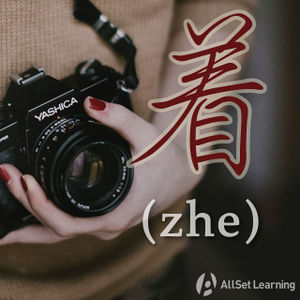Difference between revisions of "Expressing actions in progress (full form)"
| Line 5: | Line 5: | ||
== Pattern without 着 == | == Pattern without 着 == | ||
| − | + | == Structure == | |
<div class="jiegou"> | <div class="jiegou"> | ||
| Line 25: | Line 25: | ||
It's important to remember that '''virtually every part of the above pattern is ''optional''''', so you're going to see all sorts of variations of it (and rarely the full form). The most common variation is just the "[[Expressing actions in progress|在 + V]]" pattern that you probably already learned long ago. Another common variation is "[[Expressing actions in progress|正 + V]]" pattern. | It's important to remember that '''virtually every part of the above pattern is ''optional''''', so you're going to see all sorts of variations of it (and rarely the full form). The most common variation is just the "[[Expressing actions in progress|在 + V]]" pattern that you probably already learned long ago. Another common variation is "[[Expressing actions in progress|正 + V]]" pattern. | ||
| − | + | == Examples == | |
<div class="liju"> | <div class="liju"> | ||
| Line 57: | Line 57: | ||
</div> | </div> | ||
| − | ==See also== | + | == See also == |
* [[Aspect particle "zhe"]] | * [[Aspect particle "zhe"]] | ||
Revision as of 04:24, 26 October 2017
-
Level
-
Similar to
-
Used for
-
Keywords
You may have learned that 在 (zài) and 正在 (zhèngzài) can be used before verbs to express that an action is ongoing or in progress. They are used to create the Mandarin equivalent of present continuous in English. But that pattern is actually a part of a longer, fuller pattern. It's rarely used in its full form, but bits and pieces of it are frequently used in everyday speech, so it's important to know the full form, even if you don't use it regularly yourself.
Contents
Pattern without 着
Structure
Subj. + 正在 / 在 + Verb + 着 + 呢
If it's a verb-obj., you need to put the 着 between the verb and the object, or you can just leave 着 out.
Subj. (+ 正在 / 正 / 在) + Verb + 着 + Obj. + 呢
or
Subj. (+ 正在 / 正 / 在) + Verb-Obj. + 呢
It's important to remember that virtually every part of the above pattern is optional, so you're going to see all sorts of variations of it (and rarely the full form). The most common variation is just the "在 + V" pattern that you probably already learned long ago. Another common variation is "正 + V" pattern.
Examples
- 我 正在 吃饭 呢 。
- 我 在 吃 着 饭 呢 。
- 我 吃饭 呢。
- 我们 正在上 汉语 课 呢 。
- 我们 在 上 着 汉语 课 呢 。
- 我们 上 汉语 课 呢 。
- 爸爸 正在 看 报纸 呢 。
- 爸爸 正 看 着 报纸 呢 。
- 爸爸 看 报纸 呢 。
- 老板 正在 开会 呢 。
- 老板 正 开 着会 呢 。
- 老板 开会 呢 。
See also
Sources and further reading
Books
- Chinese Grammar Without Tears (简明汉语语法学习手册) (pp. 54-7) →buy
- Common Chinese Patterns 330 (汉语常用格式330例) (pp. 321) →buy
- Mandarin Chinese: A Functional Reference Grammar (pp. 217-26) →buy
- Modern Mandarin Chinese Grammar: A Practical Guide (pp. 216-8) →buy
- Integrated Chinese: Level 1, Part 2 (3rd ed) (pp. 106-7) →buy
- 40 Lessons for Basic Chinese Course (基础汉语40课上册) (p. 157)→buy
Websites
- ChinesePod: Qing Wen - The 着 (zhe) Chronicles: Actions in Progress (free podcast content)



